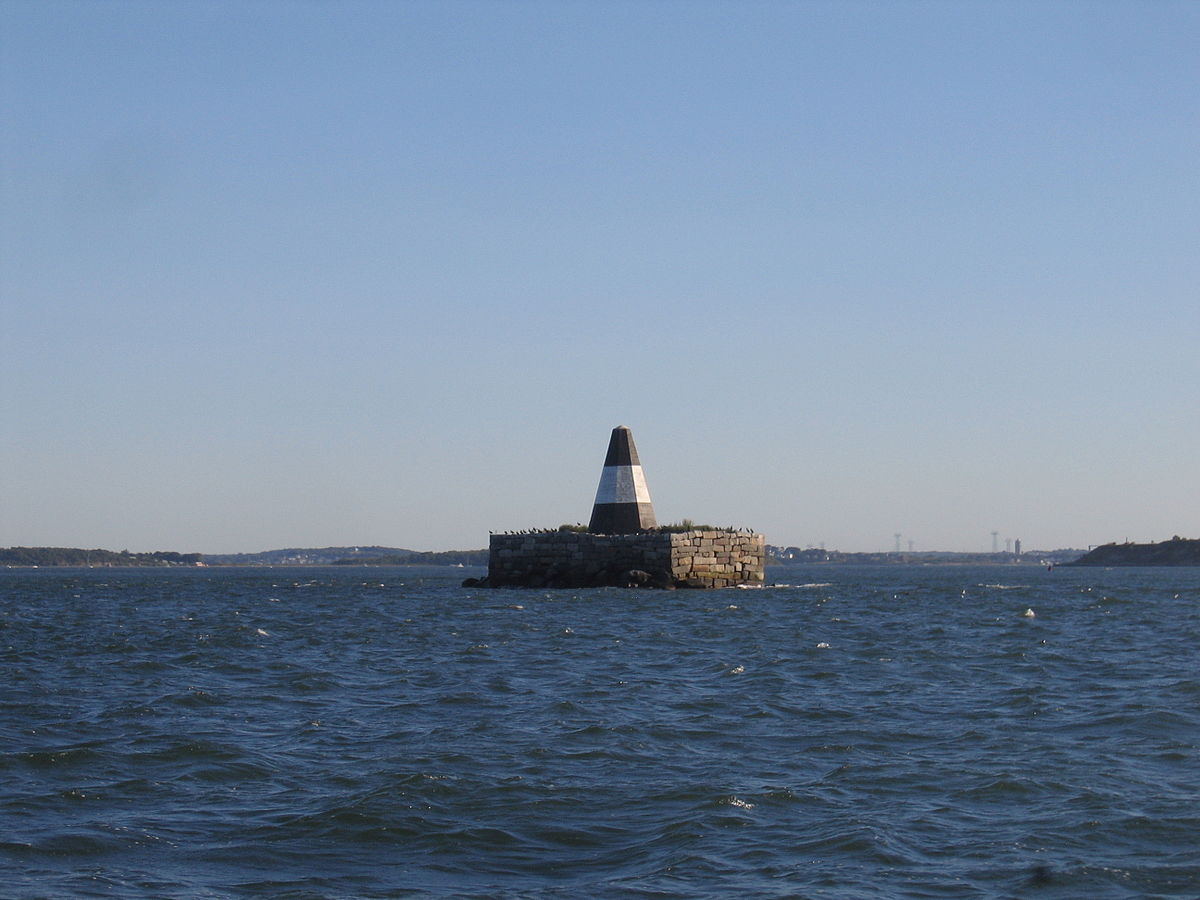Dozens of islands dot Boston Harbor and like the city itself they are full of strange legends and unusual histories.
The smallest of the Harbor Islands is Nix’s Mate (sometimes also spelled Nixes Mate). It’s so small you might sail right by without noticing it. It consists mainly of a black and white beacon (about twenty feet high) mounted on a stone platform. There’s also a very small gravelly shore, which is submerged during high tide.
Four hundred years ago, Nix’s Mate was much larger. Records indicate the island had an area of 12 acres when it was deeded to one John Gallop in 1636 for sheep grazing. It currently has an area of about zero acres. Where did all the land go? And how did the island get its unusual name?
According to legend, in the 1630s a first mate on a ship moored off the island was accused of murdering his captain while he slept. The captain’s last name was Nix. After a hasty trial the mate was found guilty and sentenced to be hanged on the island. Nix’s mate protested that he was innocent, but his pleas fell on deaf ears.
As he mounted the gallows he called out to God: “Show that I am innocent! Let this island sink into the sea to prove that I have never committed murder!” He was executed, but the island got its name and also slowly began to lose land, proving he had died unjustly.
Another variant of the story claims that Captain Nix was a pirate who got rich raiding merchant vessels. One night he rowed to the island with a chest full of gold and his loyal first mate. After the mate dug a pit, the captain killed him and buried him with the gold. His restless spirit guards the treasure but also apparently caused the island to sink into the sea.
These are good stories, but there are no records of anyone named Captain Nix being murdered or committing piracy. However, there are records of three other pirates being hanged and buried on Nix’s Mate. The most notorious of them was William Fly, who, in 1726, raided the East Coast in a ship called Fame’s Revenge. After his capture and conviction, Fly was determined to die bravely. He didn’t flinch as he walked to the gallows, and supposedly he even helped the executioner tie the noose properly when he was having trouble with the knot.
Back to the island’s name. Another theory claims that it comes from the Dutch phrase nixie scmalt, meaning “cry of the water spirit,” which a Dutch passenger uttered as he heard the waves slapping eerily against the island’s shore. It sounds plausible, but again there is no proof.
We’ll probably never learn how Nix’s Mate got its name, but historians claim it has shrunk over time simply because it was quarried for shale and ship’s ballast in the 1700s. After these large stones were removed, the tides eroded the rest of the island. That explanation makes sense, but somehow the stories about pirates and ghosts seem more fitting for this tiny but mysterious island.

Leave a Reply
You must be logged in to post a comment.